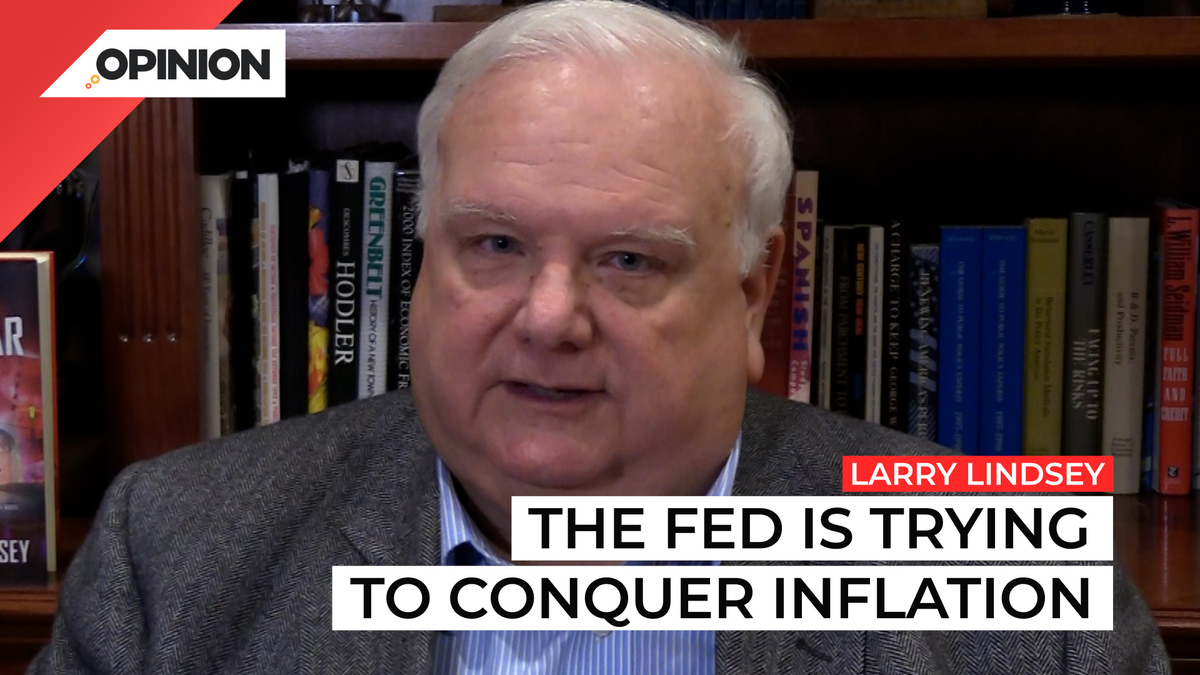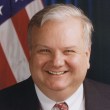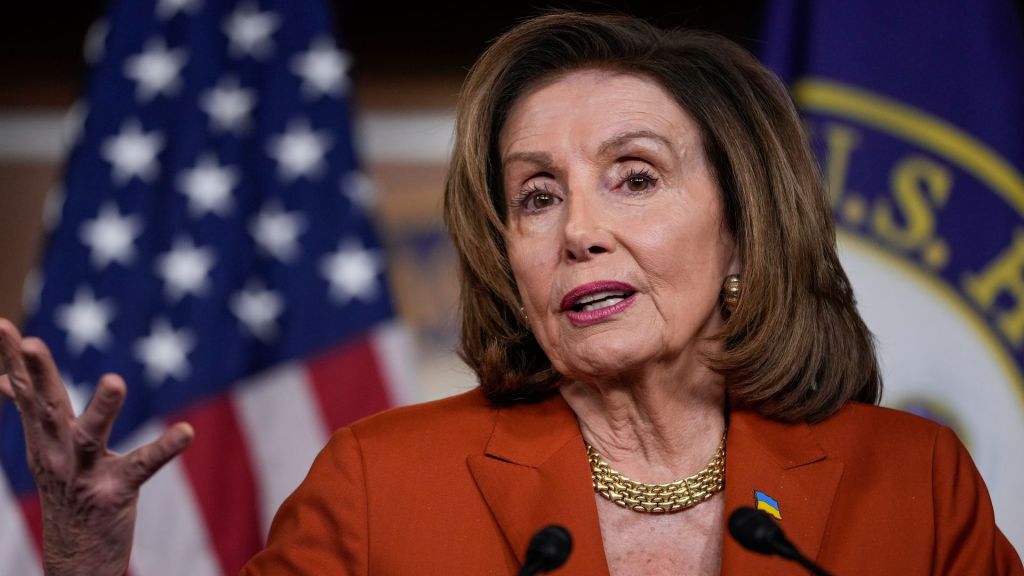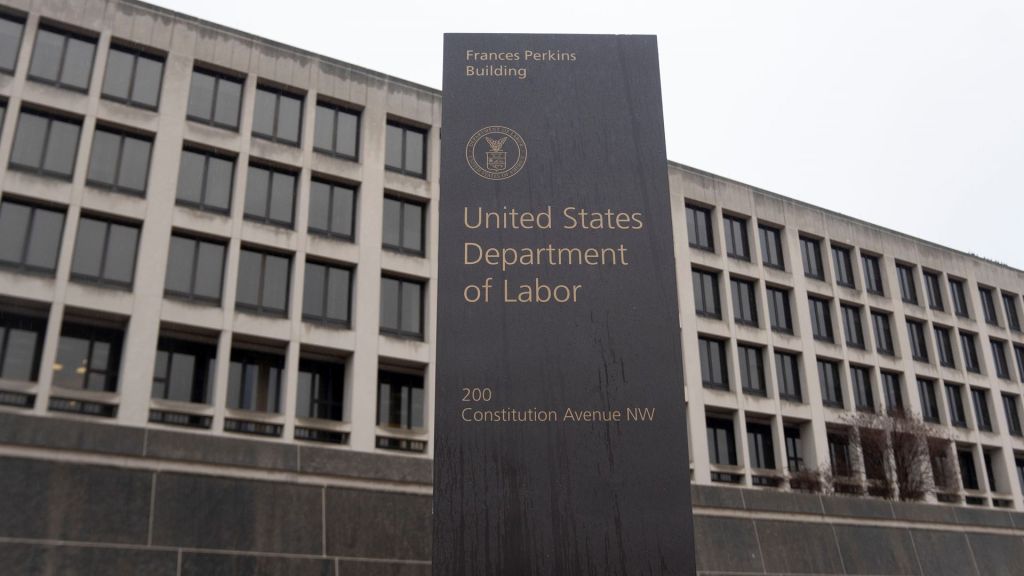
Commentary
-
Our commentary partners will help you reach your own conclusions on complex topics.
Times are tough. Right now, the Federal Open Market Committee that sets… interest rates and determines how much money is in circulation, has two bad things going on. The first is it has an inflation rate by its preferred measure of 6.8%. It wants two. Second, we’re probably in a recession. Growth in the first half of this year averaged less than negative 1.6%. Again, their target is two.
So they’re missing their target on both counts. So what on earth are they going to do? Well, right now they’ve decided to target the inflation rate first and foremost. And they’re going to be raising rates very sharply. What has the Fed done in the past? Well, a few decades ago, a man named John Taylor, professor at Stanford, came up with something he called the Taylor rule. Which isn’t really a rule, it was just a way of estimating with regression equations, what the Fed was doing. And he came down with two basic rules.
First, how far is the Fed off in terms of real growth? And second, how far off is the Fed from its target in terms of inflation? And then he said, if things were normal and they were right on target, we should be running a interest rate two points above inflation. Well, if we applied that formula now, the fed funds rate, which they’re just about to raise to a three to three and a quarter percent range, should be 9.4%. They are six points off. According to the Taylor rule and what the Fed’s done in the past, interest rates should be three times what they are now. Well, that gives a pretty simple answer. They should be hiking rates.
Well, so far so good. The problem is that it’s going to cause the recession to probably be deeper than it otherwise would have been. If they continue to hike rates this year, we’re probably going to be able to have a recession that brings down the inflation rate for the year to about five and a quarter percent. And that would imply inflation in the second half of the year of only three and three quarters percent. That would meet the definition of what chairman Powell has called, substantial progress. Now that’s not going to allow them to cut rates, but it might allow them to pause until inflation drops closer to its 2% target.
Well, that sounds easy, doesn’t it? And frankly, there’s not a lot of good news out there and this is… good news. It’s a path forward. At least we have hope. The problem is that this is going to involve a moderately deep recession. 1.6% negative for this year is about what’s going to take place. Even the great financial crisis involved an average decline of 2.6% over a total of six quarters. The Volcker recessions of 1980 and then again, a second one back-to-back in ‘81 and ‘82, averaged declines of just 0.6% a quarter. So this one is, is fairly steep. It wasn’t cheap.
Second thing is a risk, and that is that financial markets become disorderly. And what does that mean? Well, it’s like the Supreme Court and pornography. You know it when you see it. But it…what would happen is that some companies might not be able to borrow at all. There might be large declines in stock prices and things that would then resonate throughout the economy. We remember that happening in the great financial crisis when the housing market tanked. So there are risks here.
The easiest thing to do is to stop inflation before it starts. The fed didn’t do that. Now it’s trying to conquer inflation. The risk here is that a, it’s costly, could get more costly, and possibly it could create a financial crisis. Best thing to do is, don’t get in trouble in the first place.
-
Biden’s EV math just doesn’t add up
In March, the Biden administration issued a new directive requiring U.S. automakers to cut the average carbon emissions of their fleets by almost 50% before 2032. That order is one component of President Biden’s larger goal to cut total U.S. carbon emissions in half by 2030. A primary method for reaching these goals will involve…
-
President Biden just isn’t cool
For some Americans, politics is only about policy, while others prioritize core values, ideas, aspirations or beliefs. Still, for others, politics may be a reflection of culture, where voting serves as a symbolic act to proclaim cultural group identity. But for some Americans, who they vote for and support is more of a popularity contest,…
-
Federal Reserve policy should be more restrictive
The American economy is booming, with high GDP growth, record-low unemployment, and wage gains for median workers. Over the past few quarters, U.S. economic growth indicators have consistently outperformed official projections. But the U.S. Federal Reserve recently conceded that its policies might be too restrictive, hindering the full potential of the U.S. economy, which the…
-
Celebrate tight labor market, but don’t cut interest rates
While President Joe Biden has been celebrating U.S. economic success, many Americans are still unhappy about the economy. So who’s right? The most recent jobs report for February showed that while the unemployment rate rose slightly to 3.9%, job gains were higher than expected, with the total coming in at 275,000 versus the expected increase…
-
Social and economic class will define 2024 election
Following in the footsteps of FDR, Democratic support in the past hundred years has drawn largely from working-class individuals, labor unions, and civil society organizations. Republican support, conversely, tended to rely upon larger corporate donations and the support of high-income individuals. In 2024, these traditional roles are evolving, and the new reality of campaign finance…
Latest Opinions
-
 Machina Labs
Machina Labs
Robotic craftsman provides solution for aging military systems needing repairs
-
 Boeing
Boeing
Machina Labs tackles military challenges with new tech: Weapons and Warfare
-

New weather radar is vital for military aircraft safety: Weapon of the week
-
 AP Images
AP Images
DOJ to pay $138M to sexual abuse victims of Larry Nassar
-
 AP Images
AP Images
Feds accuse Sheetz of discrimination for using criminal records when hiring
Popular Opinions
-
In addition to the facts, we believe it’s vital to hear perspectives from all sides of the political spectrum.


